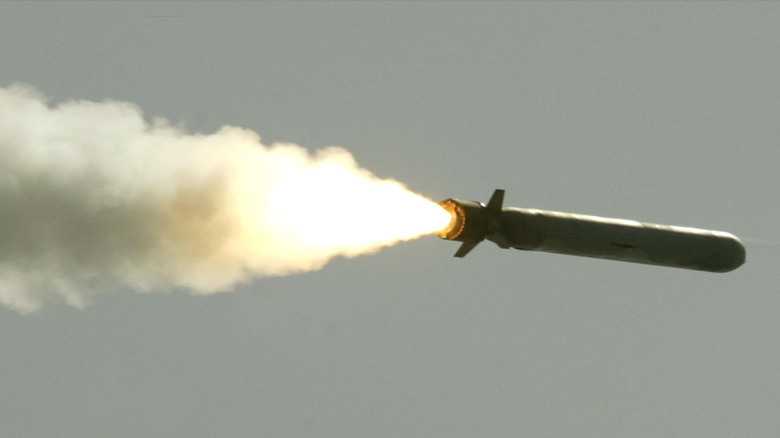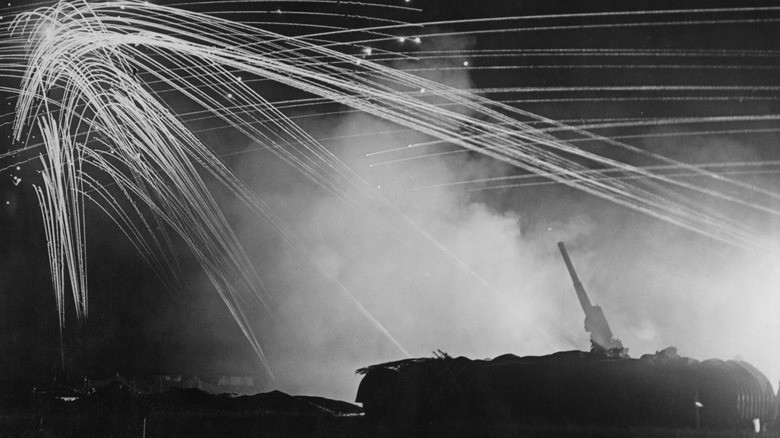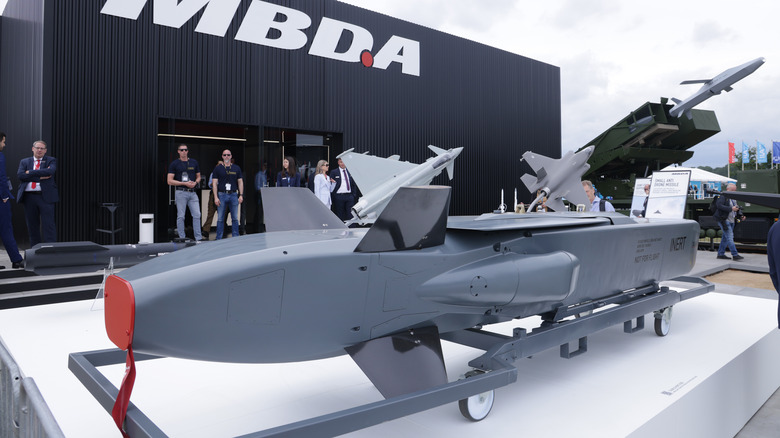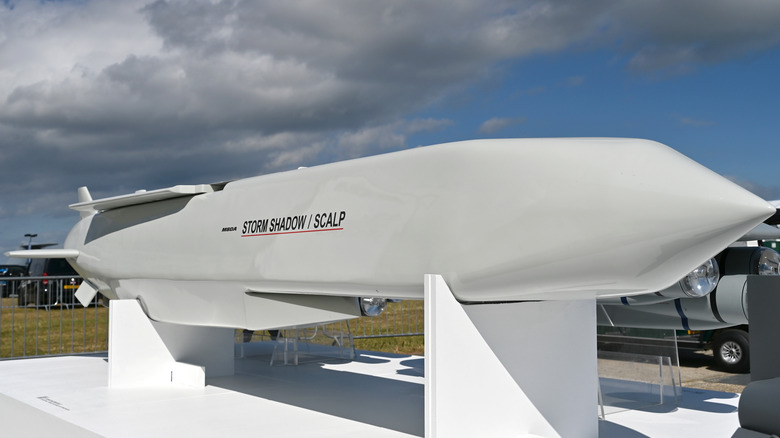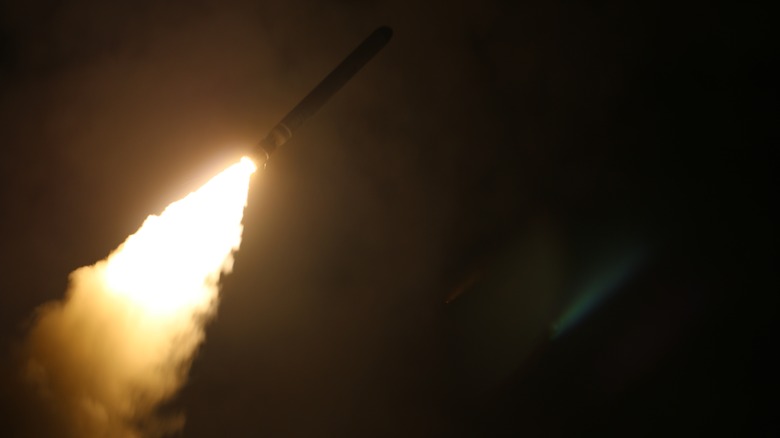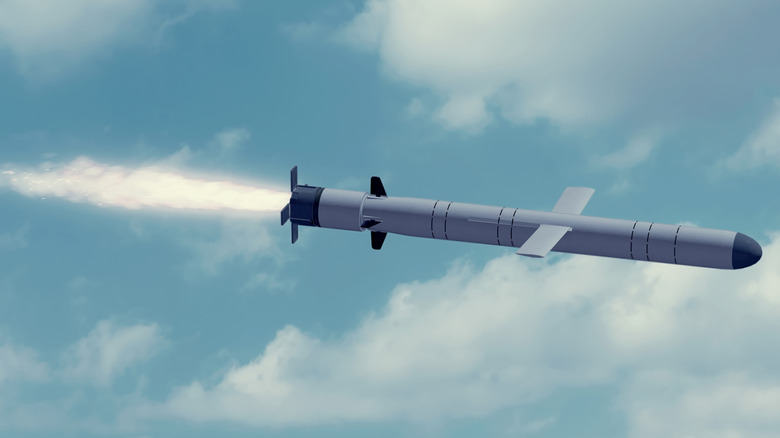What Engines Do Cruise Missiles Use & How Far Can They Fly?
Missiles and piloted aircraft often look similar to each other. This is because they're both flying machines designed to be as efficient and aerodynamic as practical. in the world of U.S. military aircraft nicknames, the Lockheed F-104 Starfighter earned the sobriquet Missile With A Man In It for its slimline, missile-esque design.
You might think, then, that cruise missiles would use the same sorts of engines their piloted counterparts do. This is true in the sense that jet engines typically power cruise missiles and a lot of military aircraft, but it's also important to remember that each is designed for a different role and, broadly speaking, flies in a different way. And of course, their dimensions and weight considerations will be very different.
To shed some light on the matter, we'll review some of the engines cruise missiles use and have used, as well as running down the specs of some to see how far they can fly. After all, it's one thing to know which engines are nestled in those sleek, deadly shells, but quite another to know what those systems allow them to do.
Germany's V-1, the first cruise missile
There are many types of jet engine, and the world's first cruise missile used one that was innovative for its time: a pulsejet. An Argus 109-014 was the power behind the German Fieseler Fi-103, better known as the V-1 (or Vengeance Weapon One).
First used against London in June 1944, in the late stages of World War II, it had a gas-powered engine offering 660 pounds of thrust and initially had a maximum range of about 150 miles. This severely hampered its effectiveness as a weapon because it restricted its potential targets, but testing and refinement improved its range. Ultimately, it would be able to fly up to 250 miles, which meant that London was much too far from Berlin (just short of 580 miles) to be targeted from the German capital. Instead, launch bases in Pas De Calais near the French coast were primarily used to launch the V-1.
It was capable of flying at a maximum of 415 mph, and could also be launched from Heinkel He 111 bombers. This capacity let the V-1 target other priority cities, such as Antwerp, Belgium. It was followed by the global gamechanger that was Germany's V-2 ballistic missile.
Cruise missiles vs. ICBMs
It wasn't long before missiles were introduced that could fly far further than Germany's Vengeance Weapon could have hoped to. The very next decade, in 1959, the U.S. military debuted the formidable Atlas missile, which still holds the Guinness World Record for longest range missile: It can fly an astonishing 10,357 miles. The thing to note here, however, is that this is not a cruise missile, but rather an ICBM. Cruise missiles fly on a low trajectory within the Earth's atmosphere, as little as a few feet off the ground, while ICBMs carry their deadly payloads into space before their flight comes to an end and they begin to fall back toward their ultimate target.
Practicality dictates, then, that ICBMs are rocket-powered, while cruise missiles use jet engines. Taking a precise, terrain-hugging route, aided by sophisticated gyroscope and GPS technology, makes a cruise missile rather more difficult to detect and to intercept, but also means that they generally have lower operational ranges. They're no less deadly as a result of this, though. Next up, we'll see exactly what powers some of the best-known — and most-feared — cruise missiles, and how far they can fly.
Storm Shadow (aka Scalp)
One of the best-known cruise missiles is the fearsome Storm Shadow, introduced in 1997, and first acquired by Britain's Royal Air Force in 2004. It is not a solely British weapon, but rather a collaborative effort between the British and French (the latter giving it the simpler and rather snappier name of Scalp). Italy also makes some parts for the Storm Shadow.
The Storm Shadow can travel at a top speed of around 600 mph on its Microturbo TRI-60-30 engine. Its range depends on the model of missile in question. The Apache AP has a range of just under 87 miles, rising to about 342 miles for the Storm Shadow. The Scalp Naval far outstrips the other variants in this area, offering a range of up to 870 miles. The reason for the stark difference is that this model, as its name implies, can be fired from a ship's Sylver A70 units or by submarine (in the latter case, the maximum range drops to around 621 miles. This version of the missile also has a slightly different model of engine, the Microturbo TR-50 turbojet.
This missile is a hefty presence, at 16.7 feet long, and a crucial part of the potential arsenal of the Rafale fighter from Dassault, as well as other models including the Eurofighter Typhoon, Mirage 2000, and Tornado.
Tomahawk
The United States' destructive Tomahawk cruise missile is another highly advanced, long-serving cruise example. It has been wielded in a huge variety of guises since 1983, when it joined the U.S. arsenal. It made its combat debut less than a decade later, during Operation Desert Storm, in its Block II TLAM-A guise. There, it demonstrated a proficiency for which it would become well known: penetrating defensive positions.
Over the decades, this mainstay of the U.S. arsenal has become increasingly deadly, thanks to a steady program of upgrades and recertification that has kept it at the cutting edge of cruise missile technology. The most recent of these began in 2020, manufacturer Raytheon reports, with the Block V family having the capacity to strike moving ships in the ocean and other tricky targets, while boasting all the advanced communication technology that allowed the previous iteration's flight and targeting to be precisely controlled over the course of its long journey. The missile family is so sophisticated that it is projected to be used into 2040 and beyond.
This extraordinary weapon is powered by an ARC MK 135 rocket motor and an F415 turbofan by Williams International. It's classed as a long-range cruise missile, and its engine and motor can propel it up to a range of about 1,500 miles. Its speed tops out at approximately 550 mph.
3M-54 Kalibr
Russia's 3M-54 Kalibr is another cruise missile with a fearsome reputation. It measures up to 29.1 feet long. Its roles in the Kremlin's arsenal are many and varied, because as with so many weapons that have been in service for an extended period (trials of the Kalibr began in 2004), multiple variations on the missile have been created.
These include the 3M54-E, designed as an anti-ship missile, and the 3M-14E, developed with an eye to combat targets on dry land. It's the 3M-54-1 base model, however, that sets the standard and defines the power and potency of the wider family. Global Defense News' Army Recognition Group lists it with a range of 137 to 205 miles, and it's propelled by a particularly interesting system. There's a turbojet engine – the TRDD-50B is used by models of the Kalibr family — at the heart of the system as usual, but to increase its impact, the end of its journey is marked by use of a secondary booster, pushing it to supersonic speeds.
In November 2024, Newsweek reported that the Kaliber's abilities are similar to those of America's Tomahawk missile. It quoted William Freer, a national security research fellow at the Council on Geostrategy in the U.K., as saying: "The threat from the Kalibr is not to be underestimated, but the combat record of the Tomahawk is more impressive."
